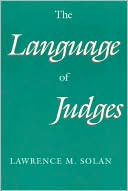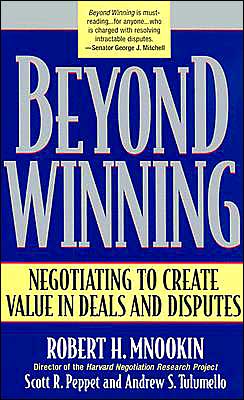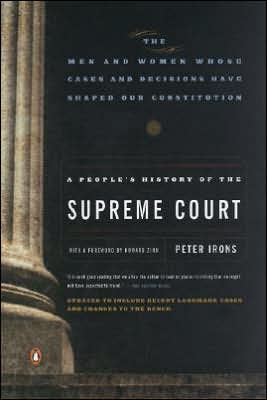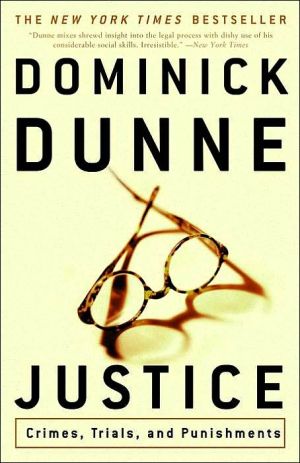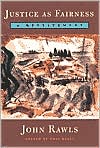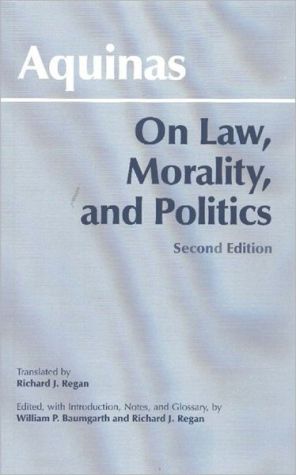The Language of Judges
Search in google:
Since many legal disputes are battles over the meaning of a statute, contract, testimony, or the Constitution, judges must interpret language in order to decide why one proposed meaning overrides another. And in making their decisions about meaning appear authoritative and fair, judges often write about the nature of linguistic interpretation. In the first book to examine the linguistic analysis of law, Lawrence M. Solan shows that judges sometimes inaccurately portray the way we use language, creating inconsistencies in their decisions and threatening the fairness of the judicial system. Solan uses a wealth of examples to illustrate the way linguistics enters the process of judicial decision making: a death penalty case that the Supreme Court decided by analyzing the use of adjectives in a jury instruction; criminal cases whose outcomes depend on the Supreme Court's analysis of the relationship between adverbs and prepositional phrases; and cases focused on the meaning of certain words in the Constitution. Solan finds that judges often describe our use of language poorly because there is no clear relationship between the principles of linguistics and the jurisprudential goals that the judge wishes to promote. A major contribution to the growing interdisciplinary scholarship on law and its social and cultural context, Solan's lucid, engaging book is equally accessible to linguists, lawyers, philosophers, anthropologists, literary theorists, and political scientists. Bryna Bogoch Lawrence Solan's book is the latest contribution to the series of studies of Language and Legal Discourse, edited by William M. O'Barr and John M. Conley. The appearance of this series is proof of the affinity between the fields of linguistics (in all its manifestations) and the law, and has provided a welcome outlet for the expanding literature on the topic. The stated goal of Solan's book is to show how judges "resort to linguistic argumentation...to find a seemingly scientific and neutral justification for difficult decisions... in an effort to mask some other agenda that is at the root of the judge's opinion" (page 11). He bases his thesis on the late Justice Cardozo's description of judicial decision-making in a system of law that cannot possibly, and indeed, was never intended, to mechanically predict each and every new situation. It was Cardozo's contention that judges tended to deny the flexibility of legal principles and their own motives for making specific decisions. Solan seeks to show that judges prefer legitimating their decisions on the seemingly more objective and universal nature of language, especially when their own sense of justice demands a certain course of action that legal principles cannot fully support. However, more often than not, Solan's analysis, although clearly written and at times even funny, is not persuasive. In fact, some of his examples demonstrate that judges ignore language issues altogether; others deal with topics that hardly relate to the main thesis. Solan's book would have been more successful had he not set up these expectations, and had defined his goals more generally as the exploration of linguistic issues in judicial decisions. Still, both legal scholars and linguists will appreciate his descriptions of the intertwining of language and legal issues in the language of judges. Indeed, few are as qualified as he is to deal with this subject, having been trained in both linguistics and the law. In analyzing judicial decisions, Solan distinguishes between the decision itself and the justification for the decision. In the best chapter in the book (chapter 2), Solan focuses on justifications that are based on linguistic, rather than legal, principles. He concisely presents certain linguistic principles, such as the last antecedent rule in the use of pronouns, and then shows how these are invoked by judges in justifying their decisions. Solan is at his best in summarizing legal disputes and in explaining the principles that are used by the judges in their decisions. Even readers with no legal background will be able to follow the arguments and issues involved in decisions about trusts, forfeitures, custody, and harassment. His main argument -- that judges are not consistent in their use of linguistic principles and that these are used to further other aims -- is most clearly documented in this chapter. Thus, for example, he shows how a far-fetched application of the last antecedent rule is used to ensure that an innocent victim will obtain immediate compensation from an insurance company. Chapters 3 and 4 focus on ambiguity in legal concepts and principles. Solan presents cases in which the determination that a concept in a statute is ambiguous has important consequences for the final decision. While the determination of ambiguity is conceivably a linguistic issue, Solan reveals that judges do not resort to linguistics to determine the ambiguity or clarity of a concept. Rather, judges decide on the ambiguity of a term on the basis of precedent and substantive legal concerns. Thus, although his analysis reveals such anomalies as a unanimous decision among the nine judges that a statute was unambiguous, but a split of five to four on what the statute meant, this does not support the main thesis of the book. Instead of demonstrating that judges mask their real motives by recourse to linguistic principles, Solan actually shows that linguistic issues are ignored or subsumed by ideological considerations. In chapter 5, Solan switches topics. Here, he seeks to explain why legal language is so Page 48 follows: complicated and describes the efforts of the Plain Language movement to simplify legal language. Aside from their tangential relevance to the main topic of the book, these issues have been analyzed more thoroughly elsewhere. A case in point is the reason for the convoluted language used in legal texts. Contrary to various conspiratorial theories that claim legalese serves lawyers' self interests, power and prestige, Solan blames the continued use of jargon on "the fear of abandoning successful formulas...and simple inertia" (p. 134). A much more satisfying explanation is provided by Danet (1984) who demonstrates by reference to rhetoric and poetics how the syntactic and semantic features of legal language provide a sense of authority and finality in crucial human affairs. While Solan also refers to the need for creating the illusion of definitiveness in legal documents, he would have benefited from Danet's analysis to prove his case. On its own, chapter 6 would have been a fascinating article, outlining the principles used in judicial decisions based on the Fourth and Fifth Amendments (against unreasonable searches and self incrimination respectively). At issue are the interpretive principles used in deciding whether a corporation is a person and thus cannot be forced to incriminate itself, what counts as an admission, and what defines the area in which a person has a reasonable expectation of privacy. In all these cases, Solan contends that the Supreme Court has not been consistent in the application of these interpretive principles. Sometimes linguistic principles are used in decisions, but more often than not, they do not contribute to the court's decision. Again, instead of illustrating the claim that judges restrict the debate to the meaning of terms while hiding the true substantive issues, his examples show that judges generally do not rely on linguistic definitions but extend their interpretation to a wide range of issues. The role of language is limited to the restriction of the range of possible interpretations. In fact, it is Solan's skill in untangling the complexity of the factors involved in interpretation that is one of the strengths of his book. What Solan particularly resents is the fact that judges present their decisions as the inevitable consequence of legal doctrine, rather than admitting that legal principles cannot resolve every dispute. He feels that the failure to present the real reasons for their decisions damages the credibility of the entire system, and results in a lack of confidence in the rule of law. At the same time, he acknowledges that any judge who would candidly admit that there are no legal principles to explain certain decisions, would also reduce the stability of the system. It seems to me that Solan overstates his case. Surely the fact that dissenting opinions are offered with the same authority and inevitability as are majority opinions underlines the flexibility of the system, without detracting from its credibility. Moreover, it is not necessary to posit a deliberate attempt to mislead when judges stress the legal doctrine behind a decision they may have taken for other, more ideological reasons. In accordance with Fish's (1989) theory of rhetoric in legal texts, a distinction can be made between the judges' actual decision-making process, and the presentation of a persuasive account of their decision. Fish claims that when judges justify their decisions, they are not trying to be dishonest, but that in order to persuade their audience, they must phrase their reasons within the accepted and legitimate legal frame. Solan does not accept the rhetorical explanation. As proof, he refers to the many simple cases where judges routinely use doctrine, and in which there is no distinction between the decision and the justification. However, because the book focuses mainly on those decisions that are not clear-cut, Solan's rejection of rhetorical explanations is not convincing. Thus, although I was not persuaded by Solan's arguments, I found his analysis incisive, thorough, and (a rarity in academic texts) eminently readable. It is a worthy contribution to the series. I must add one technical criticism. Although I realize that some legal publications Page 49 follows: still cite references in footnotes, I personally find it irritating not to be able to look up citations in an alphabetized list. I hope that the next books in the series on Language and Legal Discourse will maintain the standard format of the social sciences that has characterized previous publications. REFERENCES Danet, Brenda (1984). "The Magic Flute: A Prosodic Analysis of Binomial Expressions in Legal Hebrew," in Brenda Danet (ed.) STUDIES OF LEGAL DISCOURSE. Special Issue. Text 4, 1-3: 143-172. Fish, Stanley (1989). DOING WHAT COMES NATURALLY: CHANGE, RHETORIC AND THE PRACTICE OF THEORY IN LITERARY AND LEGAL STUDIES. Durham: Duke University Press.
PrefaceIntroduction: Judging Language11Chomsky and Cardozo: Linguistics and the Law10Cardozo's Hope: Keeping the Law Flexible12Chomsky and the Nature of Linguistic Knowledge15Chomsky, Cardozo, and Mrs. Palsgraf222The Judge as Linguist28The Last Antecedent Rule29Mrs. Anderson's Case29Processing Strategies and the Last Antecedent Rule31The Across the Board Rule: Mr. Judge34Drugs and the Last Antecedent Rule36Last Antecedents and Legal Canons37Empty Words: The Interpretation of Pronouns38Mr. Bass40Pronouns and Taxation41The And/Or Rule45Problems of Scope - And Means Or46Support of Delinquent Children - The Problem with And/Or53Mr. Caine - Or Means And54Adjectives and the Linguistics of Capital Punishment55Why Judges Do Not MaKe Good Linguists593Stacking the Deck64The Rule of Lenity66Yermian: Lenity and the Scope of Adverbs67What about Brown?75RICO - Lenity and the Meaning of Words77The Linguistics of Insurance Policies81The Jacober Accident81Ignoring Language - Partridge85Understanding Ambiguous Contracts874When the Language Is Clear93How Plain Can Language Be?94The "Plain Language" of RICO99When the Language and Its Opposite Are Both Plain99Understanding Patterns: RICO as an Unclear Statute104Turkette and Russello Revisited: Some More Fuzzy Concepts106When Is Plain Language Enough?1085Too Much Precision118The Quest for Precision119Pronouns, Precision, and the Law121Pronouns and the Fifth Amendment122Devices to Limit Ambiguity of Reference in Legal Language125Party of the First Part125Replacing Pronouns with Names127Said and Same128Using Special Words130The War against Legal Language133How Much Better Can We Do?1376Some Problems with Words: Trying to Understand the Constitution139People, Corporations, and Other Creatures140What Is a Corporation140Corporations, the Lexicon, and the Fifth Amendment143Testimony and the Act of Speech148The Current State of the Fifth Amendment149Speech Acts: Linguistics and the Fifth Amendment154Admissions155Admitting by Bleeding157What Is a Search163The Word "Search"164The Fourth Amendment and the Lexicon166Some Easy Cases and Some Hard Ones1707Why It Hasn't Gotten Any Better172Anderson and the Status Quo173Expanding Legal Doctrine178Getting Tough182The Language of Judges185Notes189Table of Cases211Index215
